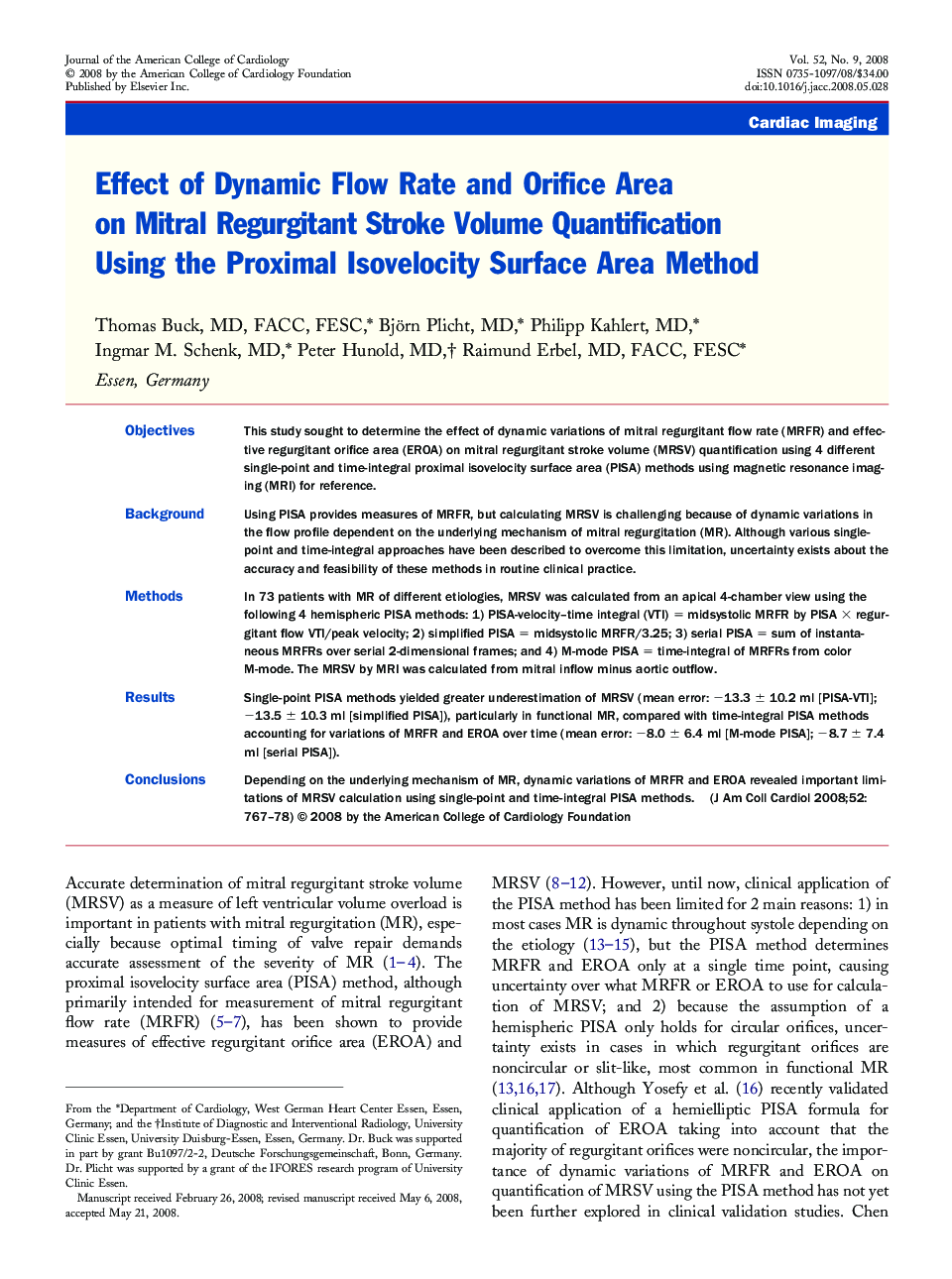| کد مقاله | کد نشریه | سال انتشار | مقاله انگلیسی | نسخه تمام متن |
|---|---|---|---|---|
| 2952860 | 1577407 | 2008 | 12 صفحه PDF | دانلود رایگان |

ObjectivesThis study sought to determine the effect of dynamic variations of mitral regurgitant flow rate (MRFR) and effective regurgitant orifice area (EROA) on mitral regurgitant stroke volume (MRSV) quantification using 4 different single-point and time-integral proximal isovelocity surface area (PISA) methods using magnetic resonance imaging (MRI) for reference.BackgroundUsing PISA provides measures of MRFR, but calculating MRSV is challenging because of dynamic variations in the flow profile dependent on the underlying mechanism of mitral regurgitation (MR). Although various single-point and time-integral approaches have been described to overcome this limitation, uncertainty exists about the accuracy and feasibility of these methods in routine clinical practice.MethodsIn 73 patients with MR of different etiologies, MRSV was calculated from an apical 4-chamber view using the following 4 hemispheric PISA methods: 1) PISA-velocity–time integral (VTI) = midsystolic MRFR by PISA × regurgitant flow VTI/peak velocity; 2) simplified PISA = midsystolic MRFR/3.25; 3) serial PISA =sum of instantaneous MRFRs over serial 2-dimensional frames; and 4) M-mode PISA = time-integral of MRFRs from color M-mode. The MRSV by MRI was calculated from mitral inflow minus aortic outflow.ResultsSingle-point PISA methods yielded greater underestimation of MRSV (mean error: −13.3 ± 10.2 ml [PISA-VTI]; −13.5 ± 10.3 ml [simplified PISA]), particularly in functional MR, compared with time-integral PISA methods accounting for variations of MRFR and EROA over time (mean error: −8.0 ± 6.4 ml [M-mode PISA]; −8.7 ± 7.4 ml [serial PISA]).ConclusionsDepending on the underlying mechanism of MR, dynamic variations of MRFR and EROA revealed important limitations of MRSV calculation using single-point and time-integral PISA methods.
Journal: Journal of the American College of Cardiology - Volume 52, Issue 9, 26 August 2008, Pages 767–778